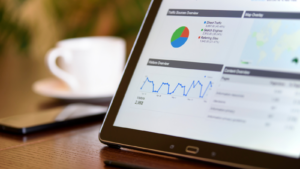Key Takeaways
- Enhanced Decision-Making: Pricing tools software provides critical insights through data analysis, empowering businesses to make informed pricing decisions that enhance profitability.
- Dynamic Pricing Advantage: Real-time adjustments based on market conditions enable companies to capitalize on demand fluctuations and optimize prices for various customer segments.
- Competitor Awareness: Continuous monitoring of competitor pricing allows businesses to stay competitive and responsive to market changes, ensuring they maintain market relevance.
- Forecasting for Success: Advanced forecasting capabilities utilize historical data to predict future trends, aiding strategic pricing decisions and maximizing revenue potential.
- Comprehensive Analytics: Users gain valuable insights through analytics dashboards, which track key performance indicators and highlight opportunities for pricing optimization.
- Increased Agility: Implementing pricing tools promotes quick adaptation to evolving market conditions, enhancing overall customer satisfaction and driving growth.
In today’s competitive market, businesses constantly seek ways to optimize their pricing strategies. Pricing tools software has emerged as a game-changer, enabling companies to analyze data, forecast trends, and make informed pricing decisions. With the right software, organizations can adapt quickly to market changes and customer demands, ensuring they stay ahead of the competition.
 These tools offer a range of features, from dynamic pricing algorithms to comprehensive analytics dashboards. By leveraging advanced technology, businesses can streamline their pricing processes and enhance profitability. As industries evolve, understanding the value of pricing tools software becomes essential for any organization aiming to thrive in a fast-paced environment.
These tools offer a range of features, from dynamic pricing algorithms to comprehensive analytics dashboards. By leveraging advanced technology, businesses can streamline their pricing processes and enhance profitability. As industries evolve, understanding the value of pricing tools software becomes essential for any organization aiming to thrive in a fast-paced environment.
Pricing Tools Software
Pricing tools software serves as a vital asset for businesses aiming to refine pricing strategies and maximize revenue. These tools assist in data analysis, enabling users to gather insights from sales figures, customer behavior, and market trends.
Core features of pricing tools software include:
- Dynamic Pricing Algorithms: Adjust prices in real-time based on competition, demand fluctuations, and inventory levels.
- Analytics Dashboards: Provide visual representations of key performance indicators, helping organizations track pricing effectiveness and identify optimization opportunities.
- Forecasting Capabilities: Utilize historical data to project future pricing trends, assisting in strategic decision-making.
- Market Intelligence: Offer insights into competitor pricing, allowing for informed adjustments to maintain a competitive edge.
- Automated Reporting: Generate comprehensive pricing reports to facilitate quick assessments and strategic planning.
Pricing tools software not only enhances decision-making but also supports organizations in adapting to ever-changing market conditions. By implementing these tools, businesses can increase agility, enhance customer satisfaction, and drive profitability in a fast-paced environment.
Key Features of Pricing Tools Software
Pricing tools software offers various features designed to help businesses refine their pricing strategies. These features provide invaluable insights and enhance profitability in competitive markets.
Dynamic Pricing
Dynamic pricing allows businesses to adjust prices in real-time based on market conditions, demand fluctuations, and competitor pricing. By leveraging algorithms, companies can implement strategies that optimize pricing for different customer segments or times. For instance, e-commerce platforms often use dynamic pricing to respond to competitor sales or inventory levels. This flexibility enables organizations to maximize revenue by capitalizing on peak demand periods.
Competitor Price Monitoring
Competitor price monitoring tracks rivals’ prices and market trends continuously. This feature equips businesses with the data needed to understand their competitive landscape. It alerts users to price changes, helping them adjust their pricing strategies accordingly. For example, if a competitor lowers their price, the software can notify the user, prompting a review of their own pricing strategy. This proactive approach aids in maintaining competitiveness and market relevance.
Price Optimization
Price optimization analyzes historical sales data, cost structures, and customer behavior to identify the most effective pricing strategy. By using advanced analytics, businesses can uncover patterns that inform better pricing decisions. This feature often includes simulations to project potential outcomes based on various pricing scenarios. For instance, a company may test the price elasticity of its products to determine optimal price points, maximizing sales while maintaining margins.
Benefits of Using Pricing Tools Software
Pricing tools software provides numerous advantages, significantly enhancing a business’s pricing strategies. These tools not only optimize revenue but also boost overall competitiveness in the market.
Increased Revenue
Increased revenue occurs when businesses implement pricing tools software effectively. Dynamic pricing algorithms adjust prices in real-time, capitalizing on demand fluctuations and customer behavior. Accurate forecasting capabilities project future sales trends, allowing organizations to set optimal prices that align with market conditions. Revenue growth often results from identifying peak sales periods and strategically adjusting prices, leading to improved profit margins. For example, companies using pricing tools reported average revenue increases of 10%-30% within the first year of implementation.
Improved Competitiveness
Improved competitiveness arises from leveraging pricing tools software to monitor market trends. Continuous competitor price monitoring helps businesses stay informed about rival pricing strategies, enabling proactive adjustments. Organizations can analyze competitor data to fine-tune their own pricing, enhancing market positioning. Through automated reporting and analytics dashboards, companies gain insights into pricing effectiveness, allowing them to adapt quickly. This responsiveness contributes to maintaining relevance in a rapidly evolving market, fostering customer loyalty as businesses consistently meet or exceed consumer expectations.
Popular Pricing Tools Software on the Market
Several pricing tools software options offer unique features and capabilities. These tools help businesses maximize pricing effectiveness and stay competitive.
Tool A
Tool A specializes in dynamic pricing, utilizing algorithms that adjust prices based on real-time market data. The platform provides in-depth analytics dashboards that track pricing performance, allowing businesses to make informed pricing decisions. Users benefit from automated reporting features that streamline strategic planning. Its user-friendly interface enables quick adaptation to changing market conditions.
Tool B
Tool B focuses on competitor price monitoring. It offers comprehensive tracking of rival pricing strategies, delivering timely insights on market trends. The software includes price optimization tools, utilizing historical data to identify optimal pricing strategies. Users can simulate various scenarios to forecast potential outcomes, enhancing overall pricing decisions. The integration capabilities with existing systems save businesses time and resources.
Tool C
Tool C provides robust forecasting capabilities to project future pricing trends. The software leverages machine learning models to analyze customer behavior and market changes, enabling proactive price adjustments. Automated alerts notify users of significant market fluctuations, ensuring swift responses. Additionally, its collaboration features support teams in aligning pricing strategies with broader business objectives, ultimately improving competitiveness and profitability.
Revenue
Adopting pricing tools software is essential for businesses aiming to thrive in a competitive landscape. These tools not only enhance pricing strategies but also empower companies to make data-driven decisions.  By leveraging features like dynamic pricing algorithms and competitor monitoring, organizations can adapt swiftly to market changes.
By leveraging features like dynamic pricing algorithms and competitor monitoring, organizations can adapt swiftly to market changes.
The benefits extend beyond immediate revenue increases. Improved pricing strategies foster customer satisfaction and loyalty, creating a solid foundation for long-term growth. As businesses navigate the complexities of pricing, investing in the right software becomes a strategic move that can significantly impact profitability and market positioning. Embracing these technologies is no longer optional; it’s a necessity for sustained success.



